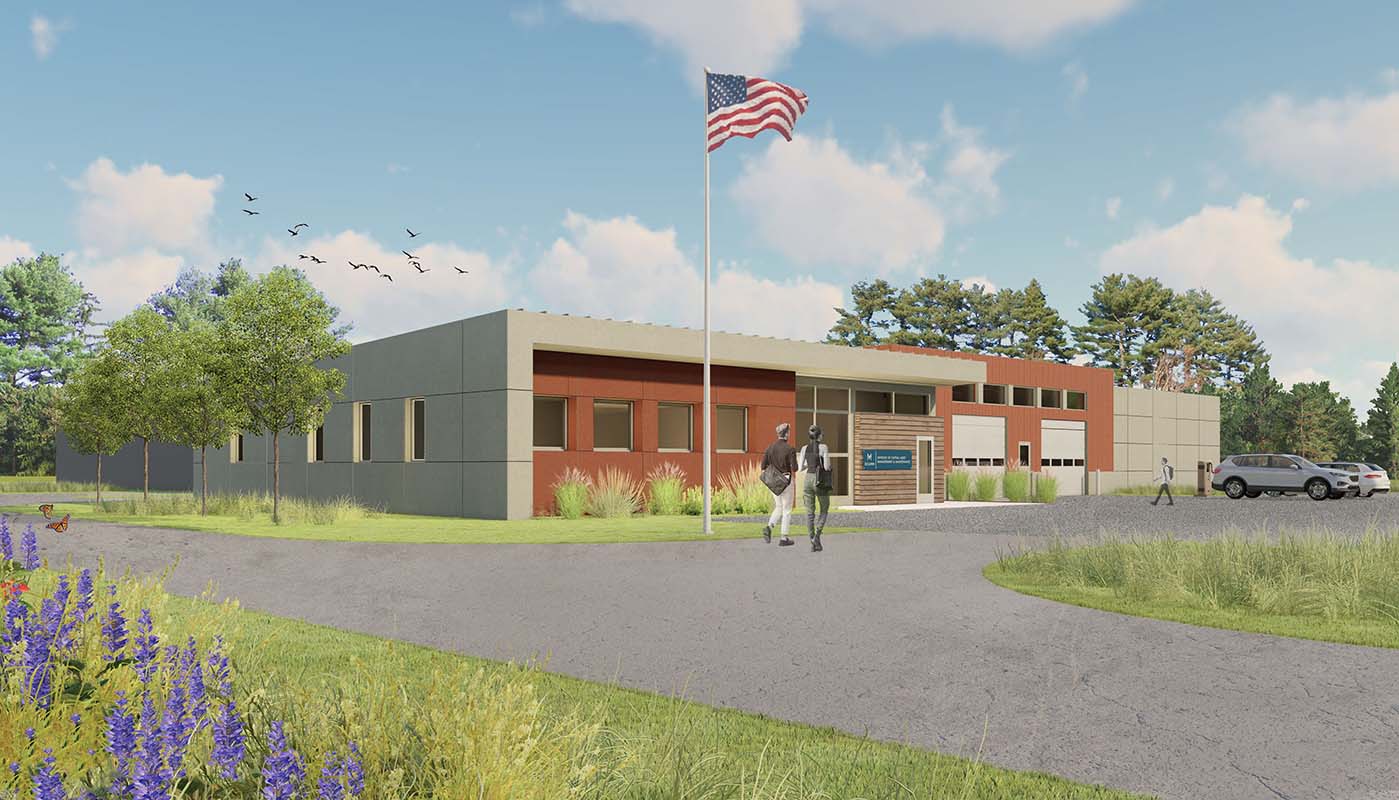
Northborough, MA The new DCAMM (Division of Capital Asset Management and Maintenance) Surplus Properties Facility is the first of its kind when it comes to sustainable features. And EDM is the fuel behind it all.
“We started with an assessment of DCAMM’s current site in Lancaster, MA, which featured an array of century-old buildings that the client was eager to bring into the 21st century. We wanted to determine what they needed, and how we could use this property in the master plan,” Tim Widman, architect at EDM, said. “We then got involved in schematic design and started heading in the direction of building an entirely new facility that brought all of the current spaces together.”
The new facility recently broke ground and will be a 7,450 s/f office/vehicle building and 4,000 s/f storage building. And while Massachusetts’ State Law requires buildings to be LEED Silver, advancing discussions took this sustainability initiative far beyond obligations.
“The more we dove into the details, the more the client wanted to make something as durable, low-maintenance, and efficient as it could possibly be. With the goal of creating a maintenance hub for the state, we started challenging how this building could function completely on its own, unaffected by what was happening in the community around it,” Widman said.
The sustainably driven decisions included using a wooden frame for both buildings, as it’s not only a naturally regenerating material, but also one that has inherent thermal qualities. In addition, the building won’t be powered by fossil fuels; it will be sustained by a photo-voltaic array and a ground-source, closed-loop geothermal heating and cooling system.
“As discussions and planning progressed, we wanted to create an exemplary building that would become the standard for all buildings that came after. So, we layered in multiple ways of looking at sustainability, not only in terms of embodied carbon and energy use, but from a standpoint of saving time, money, and human equity in the future. Things like ease of maintenance, durability, and longevity became some of the other critical weights that went into every decision,” said Widman.
While applying LEED on the office side of the building was fairly simple, doing the same for a garage posed another unique challenge. It not only involved careful planning by the design teams on the project, but also having conversations with the employees who work there to encourage new behaviors.
The EDM team is looking at ways to adjust their own day-to-day actions as well–starting with the design process itself.
“This level of critical analysis really motivated us to find ways to seek out more comprehensive and underlying sustainability opportunities as part of every project,” Widman said.
While the new building itself is fairly simple to the naked eye, the thrill of it is these unique and intricate layers of sustainability buried within the walls. With the intent of LEED Gold, LEED Net Zero certification, and Passive House certification, the DCAMM facility is truly the first of its kind for both the community and the EDM team–but most certainly, not the last.
